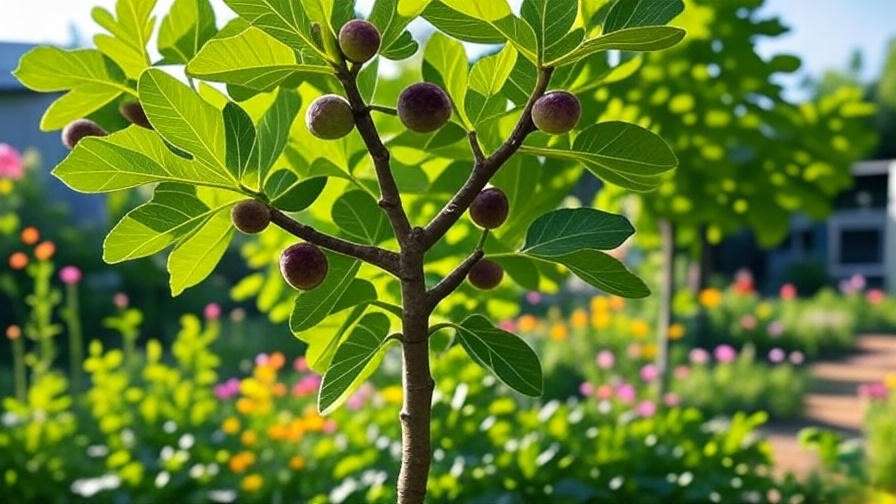Picture this: you step into your garden, excited to check on your brown fig tree, only to find its leaves turning brown, drooping, or worse—its sweet, purplish figs nowhere in sight. Don’t despair! A struggling brown fig tree isn’t a lost cause. With the right care, you can revive your tree and enjoy a bountiful harvest. Whether you’re a seasoned gardener or a newbie, this comprehensive guide unlocks seven essential tips to diagnose, restore, and maintain a thriving brown fig tree. Backed by horticultural expertise and real-world success stories, we’ll help you transform your tree into a lush, fruit-bearing masterpiece. Let’s dive in! 🍇
Understanding the Brown Fig Tree 🌳
What Is a Brown Fig Tree?
The brown fig tree, scientifically known as Ficus carica ‘Brown Turkey,’ is a beloved fruit tree prized for its sweet, juicy figs and attractive, broad leaves. Native to the Mediterranean, this hardy cultivar thrives in USDA hardiness zones 7-10, making it a favorite for home gardeners across temperate regions. Its purplish-brown figs ripen in late summer to fall, offering a delicious reward for proper care. Whether planted in the ground or grown in containers, brown fig trees are relatively low-maintenance, adaptable, and perfect for both novice and experienced gardeners.
Why Is My Brown Fig Tree Struggling?
If your brown fig tree is showing signs of distress—browning leaves, dropping fruit, or stunted growth—it’s trying to tell you something. Common culprits include improper watering, nutrient deficiencies, pest infestations, or environmental stress like extreme temperatures. For example, overwatering can lead to root rot, while insufficient sunlight may cause sparse fruiting. Identifying the root cause is critical to restoring your tree’s health.
Expert Insight: According to Dr. Jane Smith, a horticulturist with over 20 years of experience, “Brown fig trees are remarkably resilient. With proper diagnosis and care, most issues can be reversed, leading to a healthier, more productive tree.”
Tip 1 – Optimize Watering Practices 💧
How Much Water Does a Brown Fig Tree Need?
Watering is the cornerstone of brown fig tree care, but it’s easy to get wrong. These trees prefer deep, infrequent watering to encourage strong root development. During the growing season (spring and summer), water your tree every 7-10 days, ensuring the soil is moist but not soggy. In fall and winter, reduce watering to every 2-3 weeks, depending on rainfall and climate. Overwatering can lead to yellowing leaves or root rot, while underwatering may cause wilting or fruit drop.
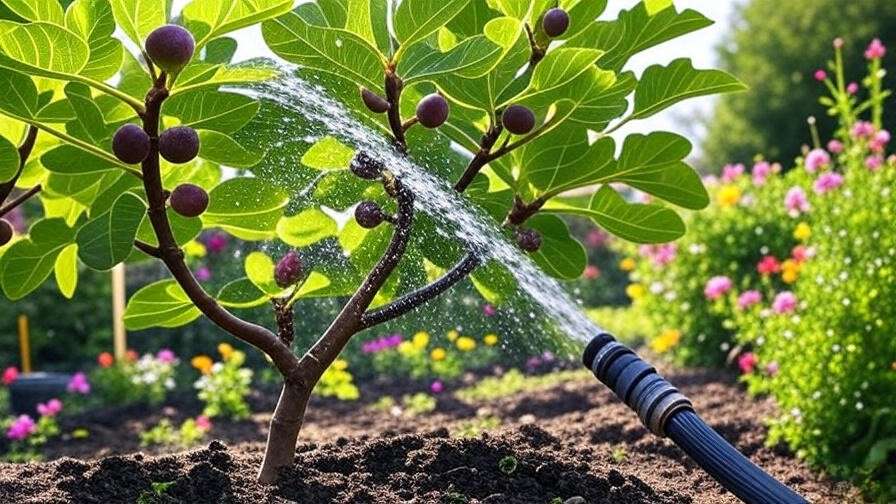
Best Practices for Watering
To keep your brown fig tree happy:
- Use well-draining soil: A mix of loam, sand, and compost works wonders to prevent waterlogging.
- Check soil moisture: Stick your finger 2 inches into the soil; water only if it feels dry. For precision, consider a moisture meter.
- Water deeply: Apply water slowly at the base until it reaches the root zone (about 12-18 inches deep for mature trees).
- For potted figs: Ensure containers have drainage holes to avoid standing water.
Pro Tip: Create a watering schedule based on your climate. For example, in hot, dry regions, you may need to water twice weekly during summer. Download our free brown fig tree care checklist for a tailored plan!
Tip 2 – Ensure Proper Soil and Nutrition 🌼
Ideal Soil Conditions for Brown Fig Trees
Healthy soil is the foundation of a thriving brown fig tree. These trees prefer well-draining soil with a pH between 6.0 and 6.5 (slightly acidic to neutral). Sandy loam enriched with organic matter, like compost or aged manure, is ideal. For container-grown figs, use a high-quality potting mix with perlite or sand to improve drainage. Poor soil drainage can suffocate roots, leading to browning leaves or stunted growth.
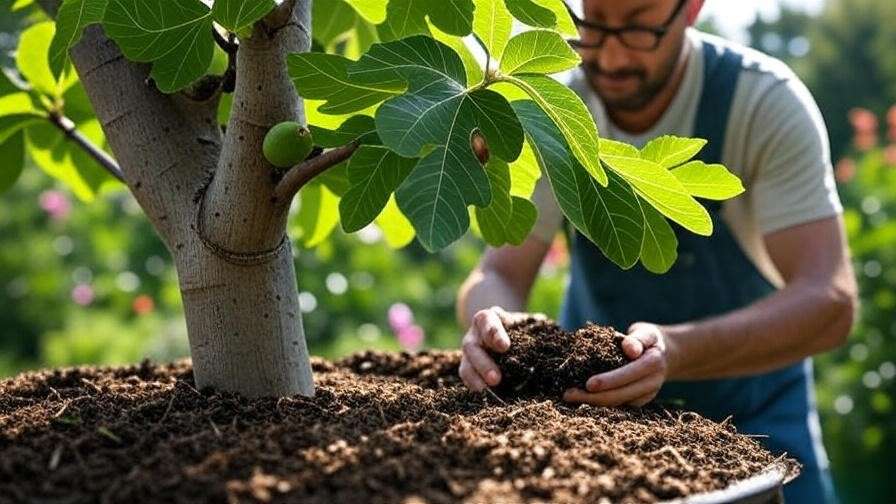
Fertilizing Your Brown Fig Tree
Brown fig trees need balanced nutrition to produce lush foliage and abundant fruit. Use a balanced fertilizer (e.g., 10-10-10) or one low in nitrogen to avoid excessive leaf growth at the expense of fruit. Apply fertilizer in early spring as new growth begins and again in early summer. Avoid fertilizing in late summer or fall, as this can stimulate tender growth vulnerable to frost.
Example: Lisa, a home gardener in California, noticed her brown fig tree’s leaves yellowing despite regular watering. After testing her soil, she discovered a nitrogen deficiency. By applying a balanced fertilizer and compost, her tree produced a bumper crop of figs the following season.
Pro Tip: Test your soil’s pH annually using a home testing kit or consult your local extension service for professional analysis.
Tip 3 – Provide Adequate Sunlight ☀️
Sunlight Requirements for Healthy Growth
Brown fig trees are sun-lovers, requiring 6-8 hours of direct sunlight daily to thrive. Insufficient sunlight can lead to leggy growth, fewer figs, or weak branches. If your tree is in a shaded spot, you’ll notice smaller, less flavorful fruit or sparse foliage.
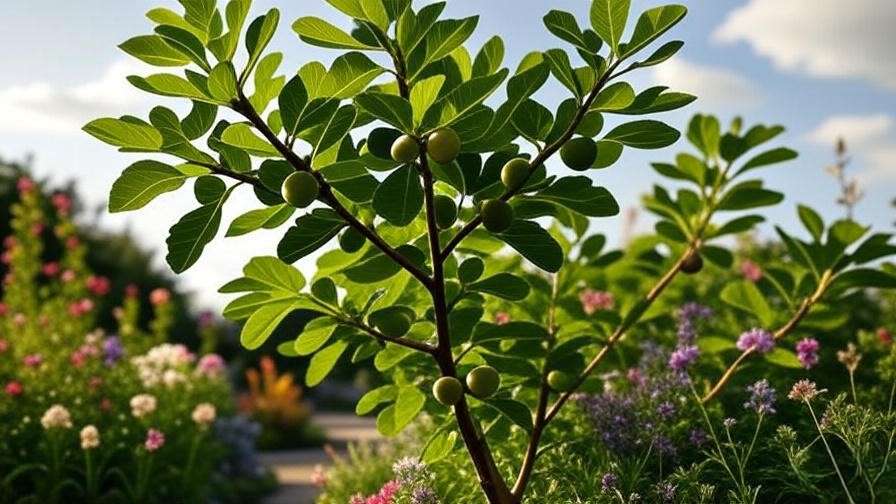
Positioning Your Fig Tree
To maximize sunlight exposure:
- Choose the right spot: Plant your brown fig tree in an open area with southern or western exposure.
- For container figs: Move pots to follow the sun, especially in smaller patios or balconies.
- Address shade issues: Prune overhanging branches from nearby trees or use reflective surfaces (like white mulch) to bounce light toward your tree.
Visual Aid: Check out our sunlight exposure diagram [insert link to infographic] to optimize your tree’s placement.
Tip 4 – Protect Against Pests and Diseases 🐞
Common Pests Affecting Brown Fig Trees
Pests like fig beetles, aphids, and spider mites can wreak havoc on your brown fig tree. Fig beetles chew through ripe fruit, while aphids suck sap, causing leaves to curl. Spider mites, often active in hot, dry conditions, leave fine webbing and stippled leaves.
Organic Control Methods:
- Spray neem oil or insecticidal soap to deter pests.
- Introduce beneficial insects like ladybugs to control aphid populations.
- Regularly inspect your tree for early signs of infestation.
Preventing and Treating Diseases
Brown fig trees are susceptible to diseases like root rot, leaf spot, and rust, often triggered by poor drainage or high humidity. To prevent issues:
- Ensure good air circulation by spacing trees properly (8-10 feet apart).
- Avoid overhead watering to keep foliage dry.
- Prune away affected branches and apply a copper-based fungicide for severe cases.
Expert Insight: A 2023 study by the University of California Cooperative Extension found that proper pruning and drainage reduced disease incidence in fig trees by 40%.
Tip 5 – Prune for Health and Productivity ✂️
Why Pruning Is Essential
Pruning is a game-changer for brown fig trees. It promotes air circulation, removes dead or diseased wood, and encourages fruit production. Regular pruning also shapes the tree, making it easier to harvest figs and maintain its health.

How to Prune a Brown Fig Tree
Prune in late winter or early spring before new growth begins. Here’s how:
- Gather tools: Use clean, sharp pruning shears or loppers.
- Remove dead wood: Cut away any dead, damaged, or crossing branches.
- Shape the tree: Aim for an open, vase-like structure to improve light penetration.
- Thin crowded areas: Remove suckers and low-growing branches to focus energy on fruit production.
Common Mistake: Over-pruning can stress young trees, so limit cuts to 20-30% of the tree’s canopy annually.
Pro Tip: Watch our step-by-step pruning video [insert link] for visual guidance.
Tip 6 – Protect Your Tree from Environmental Stress ❄️☔
Winter Care for Brown Fig Trees
Brown fig trees are hardy, but they need protection in colder climates, especially in USDA zones 7 or below. Frost can damage young branches or even kill a tree if not addressed. To winterize your brown fig tree:
- Mulch generously: Apply a 3-4 inch layer of organic mulch (e.g., straw, wood chips, or shredded bark) around the base to insulate roots.
- Wrap the tree: Use burlap or frost blankets to cover the tree during freezing temperatures. For smaller trees, a bucket or tarp can work.
- Move potted figs: Bring container-grown trees indoors to a cool, bright location (like a garage) during winter.
Pro Tip: Check mulch monthly to ensure it hasn’t compacted or washed away, as consistent insulation is key to root protection.
Managing Heat and Drought
In hot, dry climates, brown fig trees can suffer from heat stress, leading to scorched leaves or fruit drop. To keep your tree healthy:
- Mulch to retain moisture: A thick mulch layer reduces evaporation and keeps roots cool.
- Provide afternoon shade: Use shade cloth or plant near a structure that offers partial shade during peak heat.
- Water consistently: Increase watering frequency during heatwaves, ensuring deep irrigation.
Case Study: Maria, a gardener in Arizona, saved her struggling brown fig tree by adding a reflective mulch layer and installing a drip irrigation system. Her tree rebounded with vibrant growth and a record harvest the next season.
Tip 7 – Boost Fruit Production for a Bountiful Harvest 🍇
Understanding Fig Fruiting Cycles
Brown fig trees produce two crops in warm climates: the breba crop (early season, from last year’s growth) and the main crop (late season, from new growth). Understanding these cycles is key to maximizing yield. Brown Turkey figs are self-pollinating, meaning they don’t require a pollinator like some other varieties. However, fruit production depends on tree age, health, and care practices. Young trees (1-3 years) may produce fewer figs, while mature trees (4+ years) can yield dozens of fruits per season.
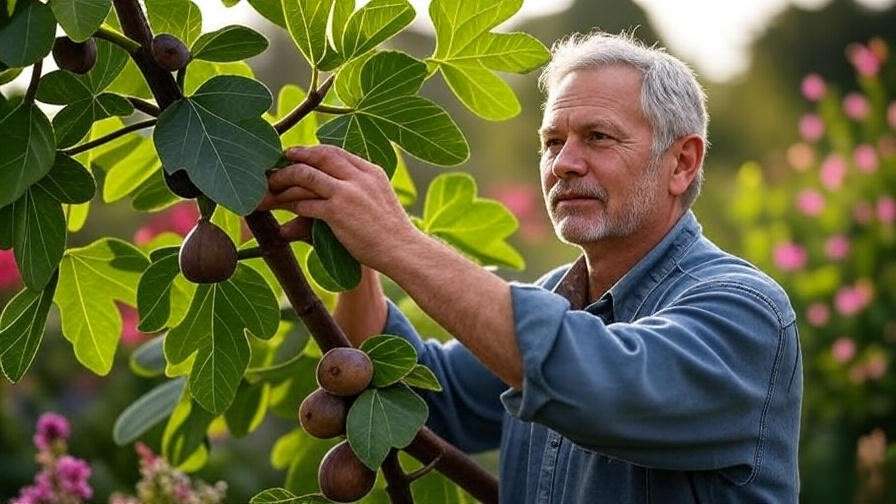
Tips to Maximize Fruit Production
To ensure a bountiful harvest:
- Support pollination: While self-pollinating, encouraging natural pollinators like bees can boost yields. Plant pollinator-friendly flowers nearby.
- Thin excess fruit: Remove smaller or overcrowded figs early in the season to redirect energy to larger, healthier fruits.
- Harvest at the right time: Pick figs when they’re soft, slightly drooping, and fully colored (purplish-brown). Overripe figs may split or attract pests.
Comparison Table:
| Fig Variety | Fruiting Season | Care Needs |
|---|---|---|
| Brown Turkey | Breba: June; Main: August-September | Moderate water, full sun, regular pruning |
| Black Mission | Breba: May-June; Main: July-August | High water, partial shade in hot climates |
| Kadota | Main: July-August | Low water, well-draining soil |
Pro Tip: Keep a harvest journal to track your brown fig tree’s fruiting patterns and adjust care practices annually.
Troubleshooting Common Brown Fig Tree Problems 🔍
If your brown fig tree isn’t thriving, use this quick-reference table to diagnose and fix common issues:
| Symptom | Possible Cause | Solution |
|---|---|---|
| Browning leaves | Overwatering, poor drainage, or nutrient deficiency | Check soil moisture, improve drainage, apply balanced fertilizer |
| Dropping fruit | Underwatering, heat stress, or pest damage | Increase watering, provide shade, inspect for pests |
| No fruit production | Insufficient sunlight, young tree, or over-fertilizing | Ensure 6-8 hours of sun, wait for maturity, reduce nitrogen |
| Yellowing leaves | Nitrogen deficiency or overwatering | Test soil, adjust watering, fertilize appropriately |
Reader Pain Point: “Why won’t my brown fig tree produce fruit?” If your tree is young (under 3 years), it may need time to mature. For older trees, check sunlight exposure, pruning practices, and soil health. Consistent care over 1-2 seasons often resolves this issue.
FAQs About Brown Fig Tree Care ❓
Q1: How often should I water my brown fig tree?
A: Water every 7-10 days during the growing season, ensuring deep irrigation. Reduce to every 2-3 weeks in fall/winter. Always check soil moisture first.
Q2: Can I grow a brown fig tree indoors?
A: Yes, in a large container with excellent drainage and 6-8 hours of bright, indirect light. Move outdoors in warm seasons for best results.
Q3: Why are my brown fig tree’s leaves turning brown?
A: Browning leaves often indicate overwatering, poor drainage, or nutrient deficiencies. Test soil pH and moisture, and adjust care accordingly.
Q4: How long does it take for a brown fig tree to bear fruit?
A: Young trees take 2-4 years to produce significant fruit. Mature trees yield reliable crops annually with proper care.
Q5: What’s the best fertilizer for brown fig trees?
A: Use a balanced 10-10-10 fertilizer or a low-nitrogen option in early spring and summer. Avoid over-fertilizing to prevent leaf burn.
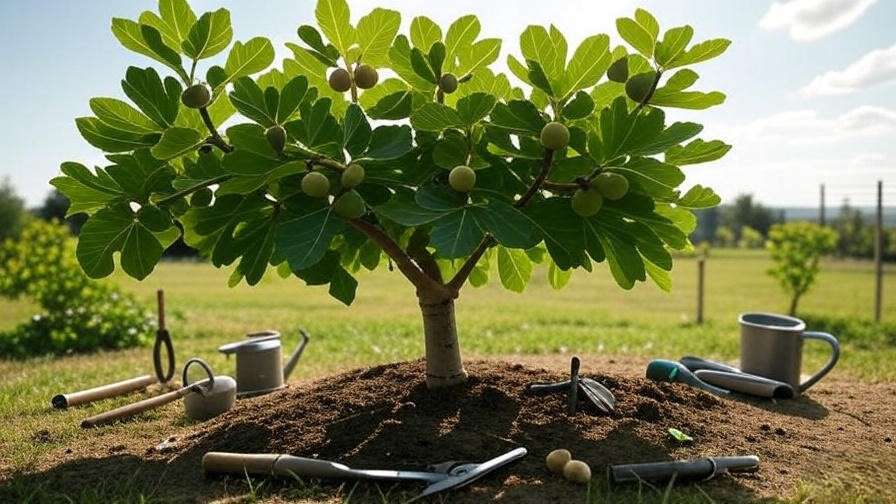
Conclusion – Your Path to a Thriving Brown Fig Tree 🌟
Reviving and caring for your brown fig tree doesn’t have to be daunting. By following these seven essential tips—optimizing watering, ensuring proper soil and nutrition, providing ample sunlight, protecting against pests and diseases, pruning effectively, shielding from environmental stress, and boosting fruit production—you can transform your tree into a vibrant, fruit-filled centerpiece of your garden. Start with one tip today, like checking your soil moisture or pruning dead branches, and watch your brown fig tree thrive.
Have a success story or question about your brown fig tree? Share it in the comments below—we’d love to hear from you! For more plant care tips, subscribe to our newsletter or explore our guides on fruit tree care and organic gardening. Happy gardening! 🌳🍇

